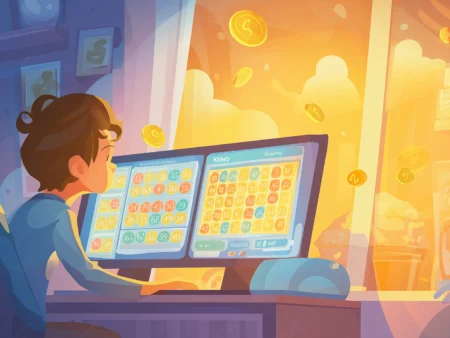You’ve seen the hits, the Hail Marys, maybe even thrown down a bet on the Birmingham Stallions. But here’s what most fans, and even sharp bettors, overlook: how much are USFL players actually getting paid to suit up?
The answer? Somewhere between “just enough to chase the dream” and “still grinding in the offseason.” USFL salaries in 2025 aren’t remotely NFL-level, but they’re more than just gas money. And for bettors, these numbers reveal something bigger: which players have skin in the game, and how that shows up on the field.
In this breakdown, we’ll cover:
- Base weekly pay and win bonuses
- Contract terms and player incentives
- How USFL salaries compare to the XFL, CFL, and NFL
- Why it all matters when you’re betting spring football
Because if you know what motivates a roster, you know where to find value. Let’s break down the numbers that drive performance, and your edge.
Table of contents
- What Is the Average USFL Salary in 2025?
- USFL Contracts: How They Work
- Position Matters: Do Quarterbacks and Stars Make More?
- USFL vs Other Leagues: CFL, XFL, NFL, College NIL
- Do USFL Players Have Other Jobs?
- Have Any USFL Players Made It to the NFL?
- Who Owns the USFL? What’s Its Future in 2025?
- Why USFL Salaries Matter for Bettors
- Want to Turn USFL Insights Into Profit?
- FAQs: USFL Salaries & Football Pay
What Is the Average USFL Salary in 2025?
The average USFL salary in 2025 is roughly $5,350 per week for active roster players, a rate that’s remained steady since the league’s 2022 return. That base pay covers the regular season, with performance-based bonuses layered on top.
Here’s how it breaks down:
- Base Pay: $5,350/week × 10-week season = $53,500
- Win Bonus: $850 per victory (max ~$6,800 for an undefeated run)
- Playoff Bonus: Roughly $10,000–$15,000, depending on performance and seeding
- Total Potential Earnings: $60,000–$70,000+ for high-performing players on playoff-bound teams
For a spring league, that’s solid, especially when compared to semi-pro pay or international football gigs. But stack that against an NFL practice squad salary (over $12,000 per week), and the gap is hard to ignore. Same grind. Same risk. Half the paycheck.
That’s by design.
The USFL isn’t pretending to be the NFL. It’s a developmental league with sustainable economics, built to give players reps, visibility, and momentum, without blowing out budgets or chasing short-term hype.
And for most players? It’s exactly that:
- A professional paycheck
- Weekly film for scouts
- And a shot, however slim, at the next level
Betting Insight:
When contracts are short and bonuses matter, effort goes up, especially late in the season. That’s where underdogs turn dangerous, and where smart bettors find their edge.
USFL Contracts: How They Work
Forget multi-million-dollar signing bonuses and five-year extensions, USFL contracts are short, strict, and league-controlled. That’s not a bug. It’s the business model.
For players chasing opportunity (and bettors watching for breakout trends), understanding how USFL player pay works reveals a lot about roster dynamics, performance pressure, and risk.
How Long Are USFL Contracts?
Most USFL players sign one-year contracts, with the league holding full renewal rights. There’s no real free agency. If you’re not re-signed or released, you’re stuck in limbo.
Team structure:
- 38 active players
- 7 practice squad spots
With rosters this tight, every snap matters. One bad week can cost a player their job. Depth chart movement is constant, especially after injuries or coaching shake-ups.
Some deals include opt-out clauses for NFL opportunities, but those aren’t guaranteed. The league often limits movement to keep talent under contract and avoid midseason poaching.
Do Players Get Paid Weekly or Per Game?
USFL players are paid weekly during the season, no game checks, no per-snap bonuses. Just a flat rate, typically $5,350 per week for active roster players. Practice squad players earn less, and there are no signing bonuses at all.
Additional incentives include:
- Active status bonuses (you only get full pay if you’re on the gameday roster)
- Win bonuses (~$850 per victory)
- Playoff bonuses (payouts grow deeper into the postseason)
No guaranteed money. No multi-year deals. No soft landings.
This system reflects the grind of minor league football:
- High effort
- Low security
- Short windows to stand out
For most players, it’s a calculated risk. Play hard now, earn your tape, and hope it’s enough to get noticed by an NFL scout or land a future bonus bump.
Betting Insight:
Short contracts = short tempers, high stakes, and unexpected roster shifts. That volatility is a goldmine for bettors paying attention to injury news, practice reps, and coaching interviews.
Position Matters: Do Quarterbacks and Stars Make More?
They do, but not the way they do in the NFL.
Most USFL players are on standardized contracts, but a select few quarterbacks and marquee signings are exceptions. Starting QBs can reportedly earn between $15,000 and $20,000 per week, especially if they’re promoted faces of the league or former NCAA stars with name recognition.
These deals are discretionary, not public, and definitely not common. Occasionally, a standout wide receiver, edge rusher, or return specialist with NFL tape might negotiate a bit above the base. But in general, the league enforces a flat, tight pay structure.
That’s by design.
The USFL was built for parity over payroll. No team is supposed to buy its way to a title. Instead, the focus is on developing talent and keeping the competition level. So while a few quarterbacks are pulling six figures for the season, the rest of the roster is grinding on $5K per week, with win bonuses as their upside.
Why It Matters for Bettors
This pay model flips the typical football narrative. You’re not betting on star power, you’re betting on cohesion, schemes, and coaching IQ.
Teams with bargain-bin QBs can, and often do, win games through system play and creative playcalling. That’s where the betting value lives.
Check today’s best USFL sportsbooks casinos and find the underdog with something to prove, not just a name on the jersey.
USFL vs Other Leagues: CFL, XFL, NFL, College NIL
To really understand USFL salaries, you’ve got to see where they sit in the bigger football economy. The USFL is part of a crowded spring league landscape, and every league plays by a different financial rulebook.
Here’s how the numbers stack up:
| League | Avg. Salary | Notes |
| USFL | ~$53,500/season | Base pay + win bonuses, no guarantees |
| XFL | ~$60,000–$70,000 | Slightly higher rates, especially for QBs |
| CFL | $65,000 CAD minimum | Stars earn $200K+, taxed heavily in Canada |
| NFL | $750,000 minimum | Massive signing bonuses, long-term deals |
| NIL | Varies wildly | Top college players now earn 6–7 figures |
Let’s be real, the NFL is in a different universe. But what’s more surprising is that some college athletes with strong NIL deals are now earning more than a USFL starter with 10 games under his belt.
That changes the dynamic.
Inside the USFL locker room, you’ll find:
- Late bloomers trying to get noticed
- NFL cuts clawing for one last shot
- Undrafted grinders who still have something to prove
That blend creates volatile, high-effort football, and unpredictable outcomes. One week, a team plays like a title contender. The next? Flat. It all depends on who’s motivated, who’s playing for a bonus, and who sees the field as a second chance.
Why Bettors Should Care
This isn’t NFL-style predictability. This is spring league chaos, and it can swing spreads, destroy parlays, or open up big underdog wins.
Do USFL Players Have Other Jobs?
Yes, and not just a few. Quite a lot do.
That’s the reality of minor league football. Most USFL contracts cover a 10-week season, plus training camp and (if they’re lucky) a playoff run. After that? There’s no off-season income, no long-term security, and no guarantee you’re back next year.
So once the final whistle blows, many players shift from grind mode to side hustle mode, not just in the gym, but financially.
Common off-season jobs for USFL players:
- Coaching (high school teams, small colleges, private QB/WR clinics)
- Personal training or athletic consulting
- Sales or corporate gigs (often tied to college degrees or connections)
While a handful of quarterbacks or breakout names may land local sponsorships or endorsement scraps, this isn’t the NFL, where a backup safety gets a shoe deal. The USFL ecosystem is lean, performance-driven, and short-term. That means most players patch their income however they can.
So no, for the majority, this isn’t a full-time football career… yet. It’s a seasonal contract with just enough upside to make it worth the physical and financial risk. But for the driven ones? It’s a platform. A path. A springboard to the CFL, the NFL, or maybe just one last ride with a team that gives them reps.
Betting Insight:
Hunger shows up on the field. Players with something to prove, or someone to support, often bring a different level of urgency. And that’s exactly where the betting edge lives.
Explore our top-rated USFL betting sites to spot live underdogs, high-motor players, and momentum shifts before the market reacts.
Have Any USFL Players Made It to the NFL?
Absolutely, and that pipeline is one of the USFL’s biggest selling points to players.
The standout success story? KaVontae Turpin. After torching the 2022 USFL season with highlight-reel returns, Turpin earned a deal with the Dallas Cowboys, became their primary return specialist, and landed a Pro Bowl selection in his first NFL year.
He’s not alone. Players like Victor Bolden Jr. and Chris Odom also made the jump, often thanks to special teams tape or high-motor defensive reps. In the USFL, those reps are currency. And for scouts watching closely, it’s a proving ground.
The USFL isn’t just a paycheck, it’s an audition.
That dynamic shows up every week. Dozens of guys know one big play could land them an NFL call, and that creates a level of urgency most leagues don’t have.
What That Means for Bettors
Volatility.
- Roster spots aren’t locked. A player can go from starting to signed away, or benched, in days.
- Coaches ride hot hands. There’s no ego about depth charts here. If someone’s cooking, they stay on the field.
- Depth charts shift fast. Especially late in the season when NFL eyes are watching.
It’s the true “next man up” environment, unpredictable for fantasy players, but a goldmine for bettors who track reps, roles, and readiness.
Who Owns the USFL? What’s Its Future in 2025?
The USFL is owned and operated by Fox Sports, giving it a rare edge among spring football leagues: real media power and financial backing. That’s been key to its survival and steady growth since the 2022 reboot, especially compared to past startups that burned fast and folded faster.
Instead of chasing hype, the USFL has taken a measured, “stay-in-your-lane” approach:
- No bloated salaries
- No stadium overpromises
- No unrealistic TV demands
The result? A functional, televised, and funded minor league that actually made it past Year 2.
But 2025 could shake things up.
There’s growing momentum around a potential USFL–XFL merger, with reports suggesting the formation of a unified spring league under the “UFL” banner. It’s not finalized, but the implications are already in motion.
What a Merger Could Mean for Salaries:
- Higher pay ceilings for standout talent as leagues combine
- More roster competition, shrinking margins for bubble players
- Bigger media deals, which could unlock performance-based bonuses and visibility incentives
What It Means for Bettors
If the merger happens, you’re looking at:
- Deeper rosters and stronger matchups
- Better data, more markets, and sharper sportsbook coverage
- A league with real consistency, and real value, for sharp bettors
Want to bet on the USFL this season?
These are the best sportsbooks with current odds and promos, start with the edge, not the guesswork.
Why USFL Salaries Matter for Bettors
If you’re betting on the USFL like it’s the NFL, you’re missing the edge.
These aren’t millionaires managing reps through a 17-game grind. USFL players are contract-driven, bonus-hunting athletes fighting for film, roster spots, and a potential NFL shot. Every snap counts. And that urgency shows up in the box score, and the betting lines.
Here’s what it means on the field:
- Aggressive playcalling: Players trying to build tape don’t sit on leads. Expect deep balls, fake punts, and 4th-and-long attempts that wouldn’t fly in the NFL.
- Incentive spikes: A 4–5 team in Week 10 might be chasing playoff bonuses. Meanwhile, a top seed could be resting starters. That swings motivation, and outcomes.
- Roster volatility: If a starter gets benched or poached, the next man up is playing for his livelihood. That can mean brilliance… or desperation.
This is where sharp bettors make their money, by identifying underdogs with something real to play for, and fading favorites with nothing on the line.
And in a league with no guaranteed money? That kind of hunger can flip spreads fast.
Want to Turn USFL Insights Into Profit?
USFL players might not be millionaires, but if you know what motivates them, you can still make money off the grind.
Motivation. Matchups. Roster shifts. These are the betting angles most fans miss, and the ones that create value week after week.
Check the latest USFL betting promos and odds right here, every line, every edge, every bonus in one spot.
FAQs: USFL Salaries & Football Pay
Most USFL players earn around $5,350 per week during the season, totaling roughly $53,500 for a full 10-game run. Bonuses for wins and playoff performance can push earnings into the $60K–$70K range.
Yes. Notably, KaVontae Turpin signed with the Dallas Cowboys after a breakout USFL season and became a Pro Bowl returner. Other players like Victor Bolden Jr. and Chris Odom also made NFL rosters.
USFL players average around $53,500 per season. XFL players tend to earn slightly more, around $60,000–$70,000. CFL players start at $65,000 CAD, but top earners can clear $200K.
Many do. Outside the season, players often work in coaching, personal training, or corporate roles to supplement income. The USFL doesn’t provide year-round pay or guaranteed contracts.
Because money drives motivation. Players chasing bonuses or film for scouts tend to perform harder, especially late in the season. That urgency creates volatility, which smart bettors can turn into profit.












































